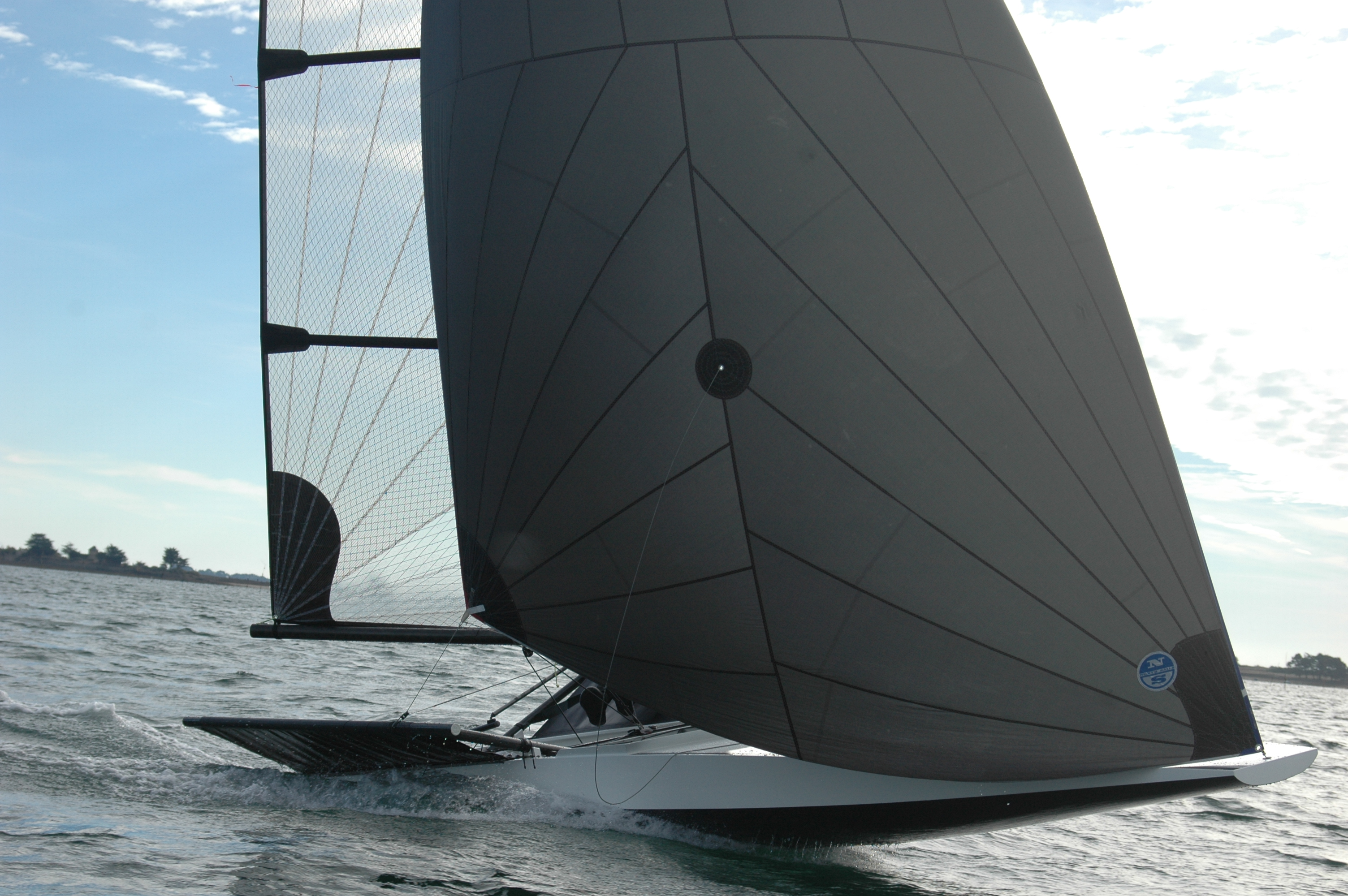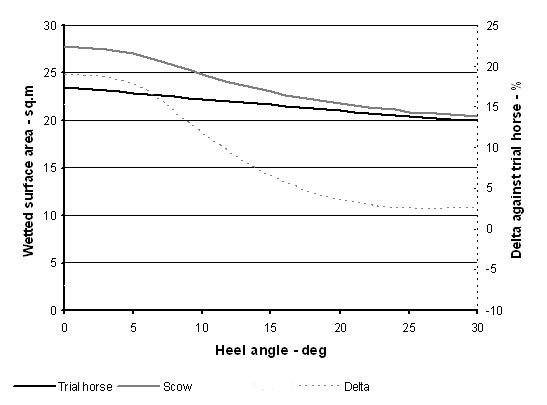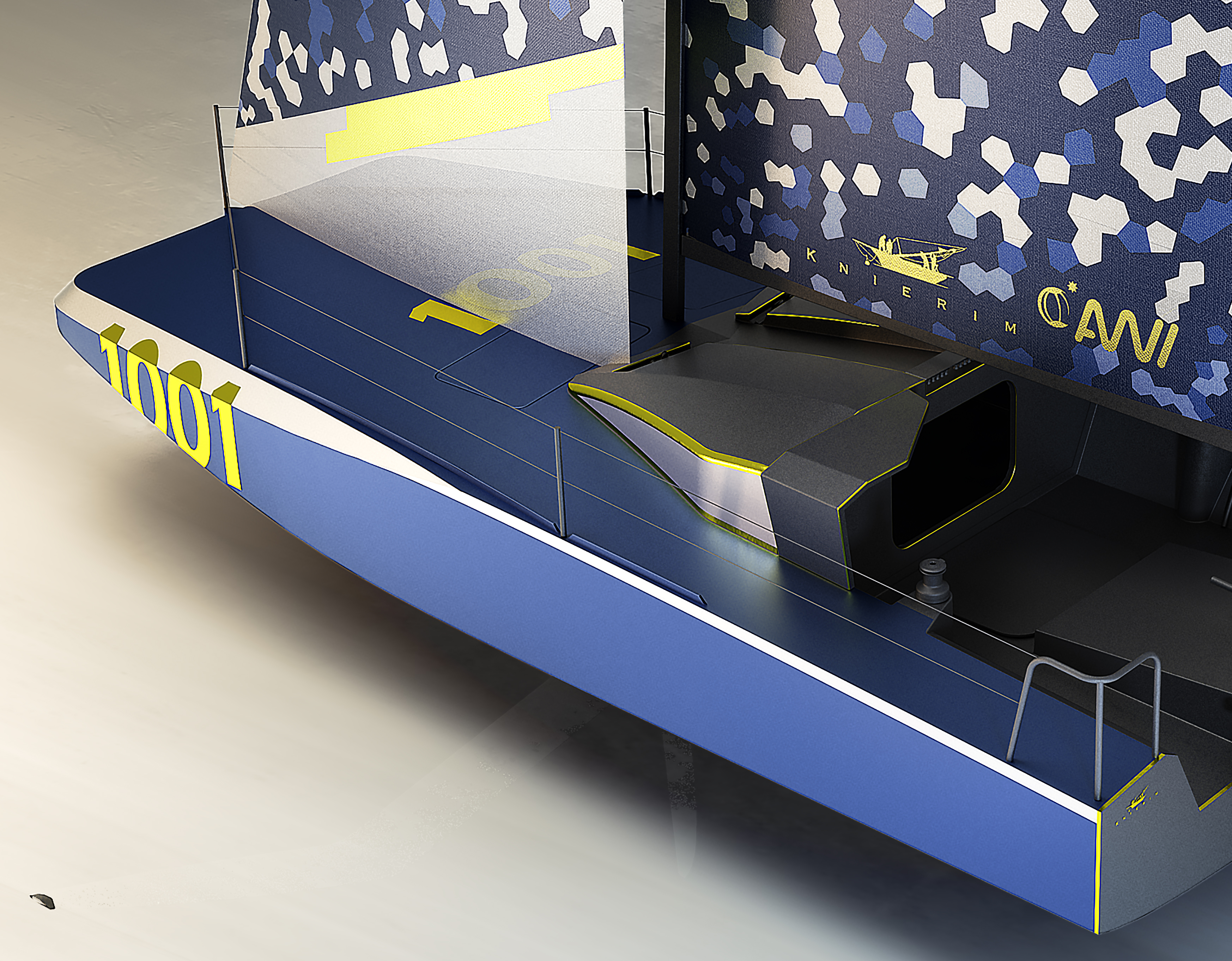
SECOND PART OF A 3 PART SERIES LOOKING AT SCOW HULL SHAPES.
SHORTER VERSION OF THE ARTICLE ‘NEW DESIGN PARADIGM’ PUBLISHED IN 2011 IN SEAHORSE MAGAZINE.
IN PART 1 WE SAW THAT SCOW HULL SHAPES HAVE MORE STABILITY, HAVE A LESSER TENDENCY TO PITCH BY THE BOW, CAN BE DESIGNED TO HAVE A VERY EFFICIENT DUAL HULL SHAPE AND ALSO LIGHTER WITH BETTER AERODYNAMICS. HERE WE LOOK AT THE CONS.
THERE IS SOMETHING ABOUT SCOW HULL SHAPES THAT MAKES THEM INCREDIBLY INTERESTING FOR A NAVAL ARCHITECT.
IT IS NOT JUST ABOUT CRACKING A NEW CODE, WHICH OF COURSE HAS A CERTAIN CHARM. SCOW HULLS OFFER STRONG, GAME CHANGING PROPERTIES, IDEALLY SUITED FOR RACING. OF COURSE THEY ARE NOT NEW, AND TO THE UNTRAINED EYE THEY MAY LOOK SIMILAR. BUT THE USE OF SCIENCE, AND COMPUTER METHODS TODAY HELP US DEVELOP THEM FURTHER, AND TAYLOR THEM TO SPECIFIC CONDITIONS.
PART TWO – THE CONS
We have seen the tremendous potential of scow hull shapes in part 1, but scow hull shapes come with added wetted surface area and seakeeping challenges.
WETTED SURFACE AREA – DRAG VERSUS STABILITY
As everyone can feel, a scow hull generally has more wetted surface area than a conventional hull shape. Exactly how much and whether it is relevant depends on how the hull shape is drawn.
It is interesting to note that wetted surface area varies proportionally with waterline beam, so WSA = k x LWL x BWL where LWL is the waterline length and BWL the waterline beam.
On the other hand, form stability as seen in part 1 varies as a cubic function of waterline beam so any increase in wetter area can potentially be compensated by an increase in form stability i.e. more driving force, in greater number.
The first plot below compares the wetted area of a scow hull compared to a trial horse (conventional hull). The second plot compares the ratio of form stability / wetted area of both hulls. The scow hull shape is superior with a peak in this particular case at around 10 degrees of heel.


SEAKEEPING – SURFING THE WAVES
If I had to choose one downside with scow hull shapes, seakeeping is the main one.
The performance of a scow hull relies on going above the waves as opposed to through the waves. For a given hull length, one must therefore decide between raising the bow to cope with a wider range of conditions, or keeping the waterline length longer, with an infinity of combinations in between.
How the wave and the sea interact is a complex science. Here are the factors that come into play:
– wave height, the higher the wave the more difficult to go above them
– wave steepness, the steeper the harder
– wave angle relative to the boat, waves coming from the bow will appear steeper
– boat speed, the faster the boat goes, the more frequent the waves are and the steeper they appear
If the waves are very large with a long period and the boat relatively short and slow, the boat will follow the wave countour, in a quasi static manner without really noticing it. Called contouring.
If the boat is really long, waves short and steep, the boat will ignore the waves or sail from crest to crest. Called platforming.
So one must question, where will the waves come from relative to the course, if in the tradewinds, waves will follow the wind and have a long period, so dealing with them is likely fine. In the channel upwind, more tricky.
A scientific answer is not straight forward as the matter is so dynamic, also influenced by sail design and this is where different solutions can be seen. Narrower bows tend to keep the bow up above the water when heeled. Wider bows maximise performance but reduce the ability to pass waves when heeled. Blunt bows above the chine line will try to push their way in but will tend to stop the boat. Finer bows will try to reduce this downside, at the risk of nose diving.
Mini 6.50 fall in a category where there is no straight forward answer. As the boats get larger, the answer become clearer and clearer in favour of scows, of course.


Recent Comments